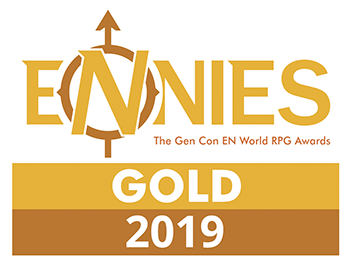In early 1934 relations between's Hitler's Third Reich and Stalin's Soviet Union cool dramatically for a variety of complex reasons. By early 1936 Stalin is convinced that Hitler intends to invade Poland by 1938 and decides to launch a pre-emptive invasion of his own. In fact Stalin was partially correct, Hitler had intended to gobble up Czechoslovakia and then invade Poland by 1939 or 1940. Stalin's early invasion of Poland promises to set off a very different second world war.

9-11-37 to 2-12-1938
"And so it begins" : Priming the Pump of Global War
Just west of Minsk Soviet tank columns stream along a recently paved road, heading westward towards the Polish frontier. As the first distant rolling thunder marks the initial artillery barrages, low flying ground attack aircraft fly overhead in a steady torrent of flying death. Further east on the road a line of trucks stretches out over the horizon, each truck carrying over a dozen nervous young Russian conscripts clutching their rifles and huddling together for warmth. The Red Army is on the move and the world will soon be rocked to it's very core. The Soviet invasion of Poland has begun.

September 11th 1937
Russian forces invade Poland. Germany,France,Britain, and the U.S. all condemn the invasion immediately.
September 21st 1937
Despite supply and maintenance problems within the Red Army, the Soviets advance 100 km in two weeks following their "Deep Penetration" offensive doctrine. Polish resistance is fierce but ill coordinated and overly brave at times, with troops refusing to withdraw. Preferring instead to stand to the last man defending their homeland.
[note : In this timeline there were no purges of the Soviet army in the late 30's. Thus, the Red Army is much more capable than that of our OTL. The "Deep Penatration" doctrine is similiar to Germany's "Blitzkrieg" doctrine and in fact pre-dates it. The Red Army of 1937 in this timeline is not the Red Army of OTL 1941. It has better leadership and better lower level officers]

Crash-landed Polish aircraft somewhere in Eastern Poland
September 26th 1937
Polish forces are beginning to regroup in central Poland but Soviet forces continue to advance steadily. Red Army elements are within 35 km of Warsaw. The Germans begin funneling in tanks,artillery, and aircraft to aid the Poles against the "red menace". German "volunteers" begin appearing on the battlefield.
October 12th 1937 :
Soviet forces have surrounded Warsaw and are hammering the city with artillery fire and air bombardment. The Poles are fighting fiercely. In the north Soviet forces have reached the border with East Prussia and have swept southward to surround surviving Polish army elements. Some polish units flee into Germany and East Prussia. In the south Polish forces have stalled the Russian advance and are gearing up for a drive to relieve the besieged capital.

Warsaw burns after heavy bombardment
October 23rd 1937
Polish forces, aided by German tanks and "volunteers", link up with the Warsaw Garrison 5 km southwest of Warsaw. The Warsaw pocket is temporarily relieved.

German built Panzer I in action during the brief Polish relief of Warsaw
November 2nd 1937
The Soviets unleash a fresh new offensive along the southern Polish front. Polish defenses, which had been stripped for the Warsaw counter offensive, melt away in the face of 400,000 fresh new Soviet troops and 2000 tanks.
November 3rd 1937
In the North the Soviets renew their offensive, wheeling southward to pinch off Warsaw once again. Polish resistance is becoming disorganized but remains fanatical.
November 12th 1937
Warsaw is once again surrounded by a Soviet ring of steel and the Polish forces in the south have been bottled up into several large pockets.
November 20th 1937
The last of the southern pockets are reduced, 800,000 Polish soldiers surrender. Warsaw continues to fight and is being mauled by around the clock, relentless, shelling. Top Polish government officials are evacuated from Warsaw by British secret service agents. A government in exile is established in East Prussia within days.
November 27th 1937
The Warsaw Garrison finally surrenders after running out of ammunition and food supplies. Unconfirmed reports of Soviet massacres filter out of occupied Poland. Over four million Polish refugees manage to flee into East Prussia, Germany, Czechoslovakia, Hungary, and Romania before the Soviets gain effective control of the Polish western border.

Warsaw a day after it's final surrender
December 2nd 1937
The Soviets install a puppet communist regime in Poland and begin a harsh purge of Poland's old government structure and culture. 200,000 soviet soldiers remain in Poland to "insure civil order" throughout Poland.
December 14th 1937
The three month Polish war has provided both sides which a lot of useful data on both tactical and strategic issues. Both Germany and the Soviet Union move to accelerate the pace of development into the next generation of tanks. Germany begins construction of Mk3 model panzers in order to begin equipping their panzer forces with them in large numbers by mid 1938. Further off is mass production of the Mk4 model. The Soviets, meanwhile, focus on their T-34 concept, hoping to bring them into service by late 1938 or 1939.


Early German and Soviet prototypes for their next generation of tanks,the Mk4 and T-34 respectively
January 3rd 1938
Fear in central Europe of the Soviets gives Germany the leverage it needs to force a "mutual defense pact" with Czechoslovakia. The German speaking lands of Czechoslovakia are annexed by Germany as part of the agreement. The agreement is hailed by Britain and France as "the great wall against the communist threat"
January 14th 1938
German forces cross the frontier into Czechoslovakia, occupying the country before it can begin to mobilize. Czechoslovakia is annexed by Germany almost immediately. Britain and France condemn the act but take no other action. They want a strong Germany to provide a shield against the Communist Revolution. However, relations between Germany and France/Britain cool dramatically over the incident. Where Britain and France might have actively supported the Germans against the Soviets they are now content to let Germany fend for itself without their aid. Hitler, pleased with himself over the ease of absorbing Czechoslovakia, decides against trying to form a united Western Europe front against the Soviet Union. Instead Hitler turns his attention to bringing the remaining minor nations of central and southern Europe into his fold.
[Note : Britain and France DO continue to trade with Germany and extend them credit as well. But they decide against directly selling them weapons on credit as they were leaning towards doing. That is the meaning of the reference above about letting the Germans fend for themselves. ]
February 12th 1938
In Budapest Germany,Hungary, Bulgaria, and Italy sign the Axis Pact, a defensive alliance to counter communist Russia. Turkey,Greece,Albania, Yugoslavia, and Romania remain stubbornly neutral.
In Moscow and Berlin military and political leaders alike plot the fate of Europe, and by extension, the world. One thing is clear. Peace between Germany and Russia is an extremely temporary situation. While Hitler plots to bring Romania into his fold, Stalin has plans of his own for the nuetral Romanian government. Only a single spark is needed to ignite world war.
Meanwhile in France and Britain a general consenus is reached to stay out of the conflict between Fascism and Communism. Across the Atlantic the United States remains in the grip of isolationism and Japan bides it's time to extend it's own Asian Empire.
War is right around the corner.







